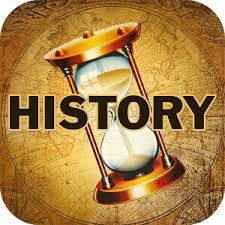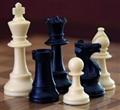An Historic Look at Horsham Chess Club Gradings by John Cannon

In 2007 Horsham C.C. member Steve Baines posed the question of what had then been the highest grades reached by Horsham players. He wondered how long the grading system has been in existence and how strong Horsham teams could have been, had the club’s leading players during the grading era all been available at the same time. I delved into the archives, and on 11th November 2007 wrote about these issues, choosing an arbitrary cut-off point of grades above 160, in order to limit the size of the task. A recent query by Ian Comley has prompted me to revise and update the 2007 article, which was quite a straightforward task. Eleven more players have now been included, three of whom are no longer members.
The very first B.C.F. Grading list was published in September 1954, when grades were given as four-digit numbers. Since 1965 they have been on the same three-digit basis as today, albeit with some tweaking of the calculations, notably to take account of rapidly rising juniors. Up until 1971, published grades were grouped into bands, each of which encompassed a range of consecutive figures. The bands were designated from 1A and 1B to 6A and 6B, with 1A to 3B containing the country’s elite players. In the mid-1970s the SCCU computerised grading system was set up by Horsham C.C. member Peter Leat, who was a Sun Alliance programmer.
For the record, I was in 5A in 1954, and fluctuated between 4A and 5A until the bands were abolished in 1972. I had reached 195 in 1965, and a subsequent gradual descent has been mostly mirrored by those of my university contemporaries. The proliferation of chess literature and knowledge, the influence of the internet, faster time limits, the sheer amount of chess now being played, advancing age and the organised training and steady rise of the younger generation and are all factors in the decline. (The general improvement and levelling of playing standards seen in the chess world following the 1972 Fisher–Spassky World Championship Match had a parallel in professional tennis in the Open Era, where tournaments proliferated and flourished in response to soaring sponsorship, and improved racquet technology largely standardised styles of play.)
I have examined the published grades of all Horsham C.C. members from the start of grading to the present day, and the following 37 players all exceeded 160 whilst being current and active Horsham C.C. members. Where the same grade was achieved in more than one year, only the earliest year is given, and no differentiation has been made between the fairly recent January and July grading lists of the same years. As in other fields, comparisons between different eras are of course essentially speculative, and it is significant that just over a third (13) of the qualifying grades date from prior to 1980, when the club was much smaller than it is now, and less chess was played in general.
Gavin Lock peaked @ 206 in 2013; Stephen Hawes @ 202 in 1978; Richard Power @ 198 in 1970; Mike Forster @ 197 in 2015; James Mansson @ 196 in 2012; John Cannon @ 195 in 1965; Anthony Higgs @ 195 in 2014; Brian Donnelly @ 193 in 2016 (Brian had obtained the IM title in the 1980s, and represented Zimbabwe in three Chess Olympiads); Matthew Gillings @ 191 in 1996; Dix Roberts @ 188 in 2014; Amy Hoare @ 184 in 2014; Chris MacArthur @ 182 in 1971; Phil Stimpson 182 in 2012; Alex Freeland @ 182 in 2016; Steve Baines @ 179 in 1990; Peter Leat @ 178 in 1977; Julian Goodare @ 178 in 1980; Peter Harbott @ 178 in 2016; Chris Cropp @ 177 in 1983; Paul Taylor @ 176 in 2012; Paul Kington @ 175 in 1974 (during his first period of club membership); Bernard Bruno @ 172 in 1974; Chris Jones @ 172 in 1996 (Chris is now with Worthing C.C.); Roy Page @ 171 in 2012; Ben Silverstein @ 170 in 2010; Ian Comley 170 in 2016; Derek Leach @ 167 in 1970; Chris Heath @ 167 in 2015; Gary Marsh @ 166 in 2010; Tim Pavlovic 166 in 2016; Brian Locke @ 164 in 1970; John Scholey @ 164 in 1971 (when John left Horsham he joined East Grinstead C.C.); Peter Rice @ 162 in 1973 (Peter later became captain of the Hertfordshire Open team); John Brookes @ 162 in 1989 (after he left Horsham John’s OTB grade climbed to the high 170s and he gained the correspondence GM title); Dave Hurrucks @ 162 in 1993; Ben French @ 161 in 1970; and Jack Smith (Horsham's only Sussex County Champion, in 1953) @ 161 in 1975.
It is noteworthy that Julie Denning is the third Horsham player to make a significant impact on the wider chess community as a grader. Ben French was sole Sussex Grader from 1963 to 1972 and helped extensively with Southern Counties grading, and Brian Locke was Southern Counties Grader from 1975 until his sudden death at 53 in March 1983.
- Log in to post comments

